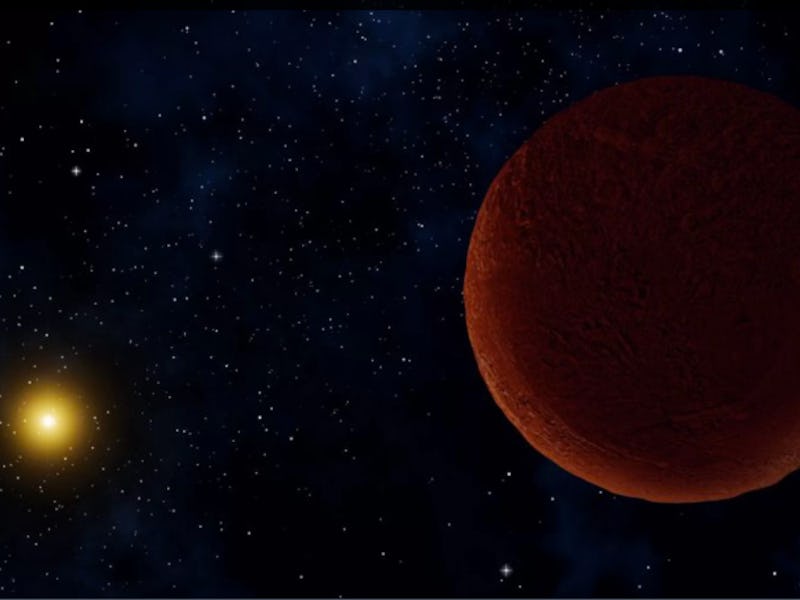Say hello to our new planetary neighbor, DeeDee, which was just given the coveted distinction of dwarf planet.
Confirmed by the Atacama Large Millimeter/submillimeter Array (ALMA), this little object was found orbiting our sun, more than 9 billion miles away from the sun — about three times the distance of Pluto from the sun. ALMA detected the planet’s tiny dimensions: a spherical shape that comes in at 395 miles across.
It’s probably also not alone out there in the far reaches of our solar system.
“Far beyond Pluto is a region surprisingly rich with planetary bodies,” said David Gerdes, a scientist with the University of Michigan and lead author of the research, said in a press release. “Some are quite small, but others have sizes to rival Pluto and could possibly be much larger.”
A closer look at DeeDee's orbit.
The planet, formerly known as UZ224, was informally named DeeDee, for “Distant Dwarf” — so distant, in fact, that it takes DeeDee 1,100 years to complete one orbit around the sun, and it takes 13 hours for DeeDee’s light to reach Earth. Because of this, DeeDee is only 30 degrees Kelvin, slightly above absolute zero, which translates to a really freaking cold -406 degrees Fahrenheit. There’s so little light that hits DeeDee that it looks like the flame of a candle from ALMA’s perspective.
Scientists believe dwarf planets like DeeDee, and other objects, are just “cosmic leftovers” from the initial formation of the solar system. Their origins are particularly intriguing to scientists because they may reveal important details about how planets like Earth formed and even help scientists finally locate the mystical “Planet Nine.”
“There are still new worlds to discover in our cosmic backyard,” Gerdes says. “The solar system is a rich and complicated place.”
